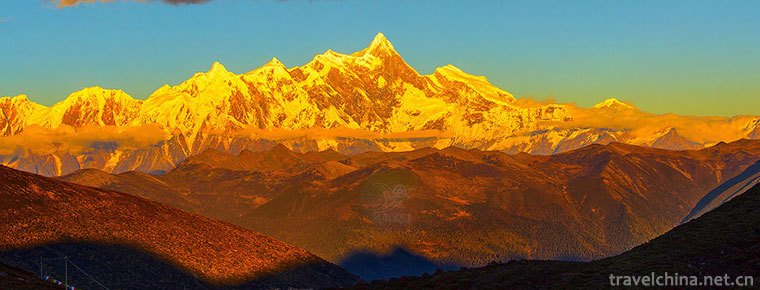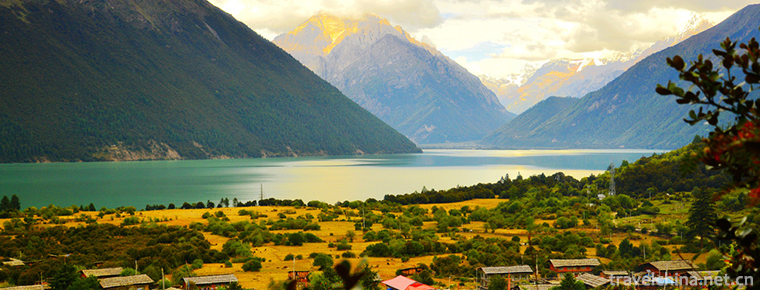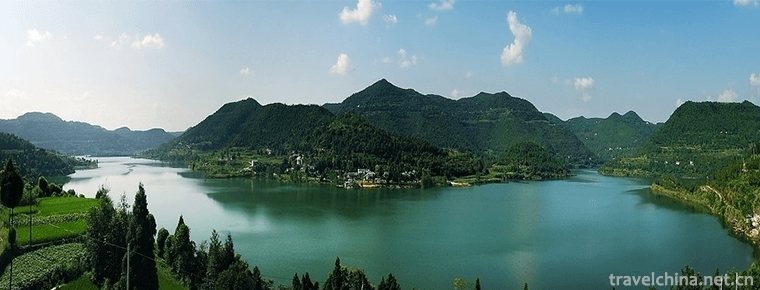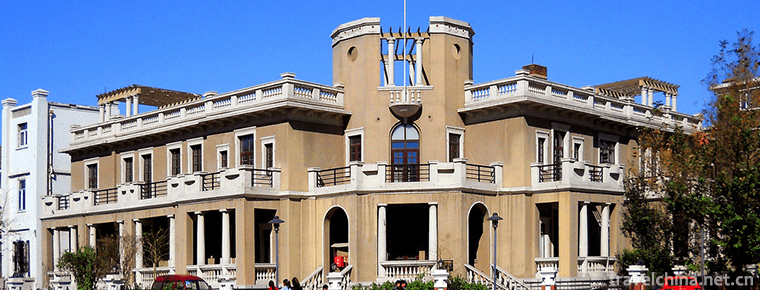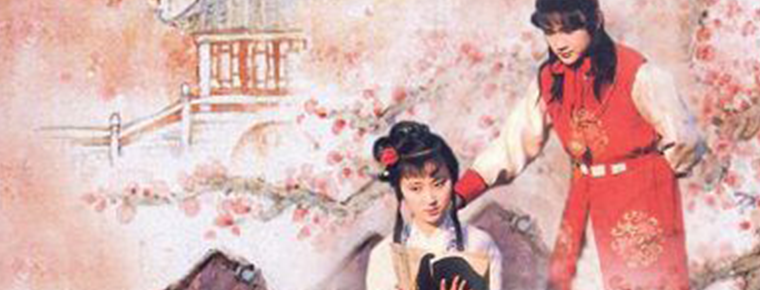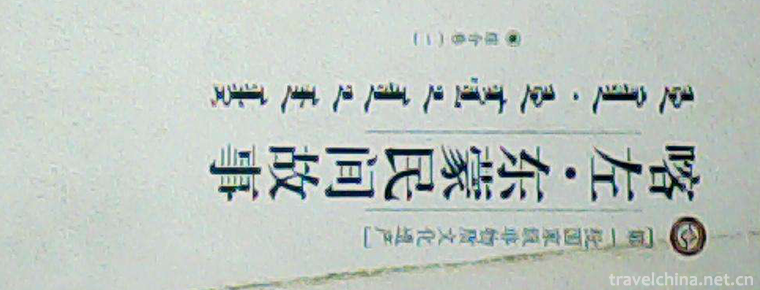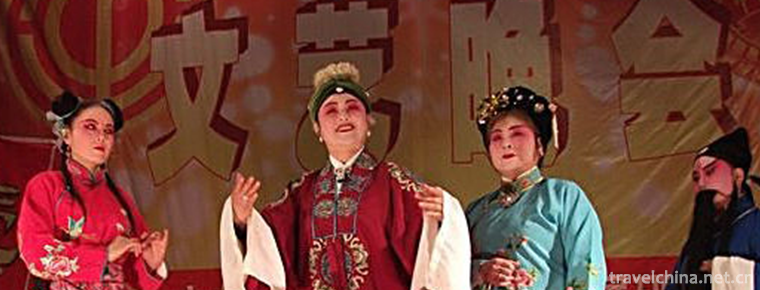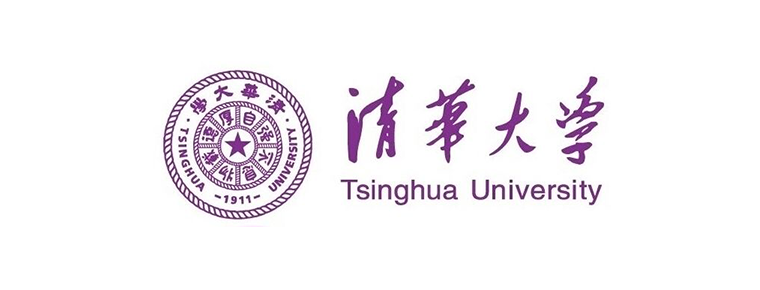Guyi Garden
Guyi Garden
Guyi Garden is located in Nanxiang Town, Jiading District, northwest suburb of Shanghai. It was built in Jiajing period of Ming Dynasty. Its original name is "Yiyuan". It was taken from the phrase "Green Bamboo Yiyi" in the Book of Songs. In the eleventh year of Qianlong in the Qing Dynasty (1746), it was renamed Guyiyuan. It is one of the five classical gardens in Shanghai.
Guyi Garden is 21 kilometers away from the city center. It has six scenic spots including Yiyetang, Goose Pool, Songhe Garden, Qingqing Garden, Yuanyang Lake and Nanxiangbi. It is one of the oldest attractions in Shanghai. In 2006, Guyi Garden was awarded National AAAA Tourist Scenic Spot.
Historical Evolution
The original name of Guyi Garden was built by Zhu Sansong, a famous bamboo Carver in Jiading in Ming Dynasty. The scale of "Ten Mu Garden, Five Mu House" is used to build pavilions, terraces, pavilions, pillars, rafters and corridors with various bamboo patterns.
After Min Shi's death, Yiyuan was transferred to Li Yizhi, son of Li Mingfang in Hanlin, about the end of Wanli. In the late Ming and early Qing Dynasties, Yiyuan was successively owned by Lu and Li.
In the winter of the eleventh year of Emperor Qianlong of the Qing Dynasty (1746), Ye Jin, a man from Dongting Mountain, bought Yiyuan. In the following spring, civil engineering was rebuilt and rebuilt. In the autumn of the 13th year of Qianlong, it was renamed Guyiyuan after a dynasty. According to the record of Guyi Garden written by Shen Yuanlu in the Qing Dynasty, the garden sits in the west of Guangfu Chan Yuan, with its gate facing Cao Jiabang and its south facing Liangtian Wanhectare. In the garden, there are Gushan Corridor, Xiangge Cuilou, Shiqiaoshuixie and Weishi rockery rockery, all of which are the architectural style of Ming Dynasty.
In the fifty-three years of Qianlong (1788), the local people in Jiading donated money to buy the ancient Yi Garden as the temple garden in Town God's Temple. In the eleventh year of Jiaqing (1806), donations were raised again for renovation.
During the ten years from Xianfeng to the first year of Tongzhi (1860-1862), the Taiping Army fought fiercely with the Qing Army and the "Foreign Gun Team" many times in Nanxiang, and some buildings in the garden were destroyed. From Tongzhi to Guangxu, Nanxiang's public offices successively renovated some usable buildings and built some additional places for industry gatherings. Later, they opened restaurants, tea shops, snack shops and photo galleries in the garden. At this time, the temple garden had become extinct.
During the January 28 Incident of the Republic of China in 1932, the Japanese army occupied Nanxiang on March 3, and Guyiyuan was occupied by the invading army for more than two months. After the Japanese withdrawal, the houses in the garden collapsed, the rockery collapsed, the trees were cut down and the flowers and plants withered.
In May 1933, 60 local patriots, such as Zhu Shoupeng and Chen Shaoyin, signed the Guyiyuan Renovation Committee, raised 6,000 yuan for partial restoration, and built a new repair kiosk, which lacked a corner of the northeast, named "Lack of Corner Pavilion" in honor of the country. At this time, the area of the whole garden is 18,000 square meters.
During the August 13 Incident of the Republic of China (1937), Nanxiang was subjected to war again. Most of the buildings in the garden were destroyed except for the corner pavilion, Xiaoyun Du and Wulaofeng rockery. The Yayetang became the stables of the Japanese army and the ancient flowers and trees disappeared. After the victory of the War of Resistance Against Japan, the town government opened it as a park. Local people gathered to repair Guyi Garden. They raised money to rebuild the corner Pavilion and the boat-free pavilion, built the Weiyin Pavilion, the South Hall and the White Crane Pavilion, and planted a number of trees, flowers and plants.
In 1957, Nanxiang Town raised 5807 yuan to renovate Guyi Garden. Construction started in March and was completed and opened on October 1 of that year.
In 1958, the Shanghai Landscape Management Office allocated 130,000 yuan for a large-scale renovation and expansion of the park. The garden boundary expanded to the West and south, and the total area of the garden increased to 584,400 square meters.
The Park reopened on October 1, 1959. In the same year, the Nanxiang Town Government moved a pair of Tang Dynasty stone scriptures and a Song Dynasty stone pagoda from the original Yunxiang Temple into the garden. Since then, a number of cultural relics such as the Warring States Sword and Zhuge Drum donated by Chen Shaoyin have been presented to Guyiyuan for a long time to exhibit in the South Hall. Wang Mingyi donated a 100-year-old double red peony to the park and transplanted it to the north of Wuqu Corridor.
The Plum Blossom Hall was rebuilt in 1962. By 1963, the park had an area of 78,000 square meters.
During the Cultural Revolution, Buddhist statues on stone scriptures and pagodas were destroyed, and the corners of ancient buildings were smashed. During the Ming and Wanli Dynasties, the stone tablets of Li Liufang (Uncle Li Yizhi), one of the "Fourth Mr. Jiading", were destroyed, and famous calligraphy, painting and other cultural relics such as Feng Zikai were destroyed or confiscated. From January 1967, the name of the garden was changed to Nanxiang Park.
After 1973, repairs have been carried out and Yuexuan, Xiaosonggang rockery, Baihe Pavilion, Nanting Pavilion, Qiangjiao Pavilion and Fuyun Pavilion have been rebuilt.
In 1977, the name of Guyi Garden was restored and 280,000 yuan was invested in renovation. It is mainly to rebuild the fence of the park, rebuild the moon gallery, Liudaixuan and allocate flowers.
In 1979, an additional 780,000 yuan was invested in the construction and expansion of the park, with an area of 92 mu (613,000 square meters). The key points are to build rockery, build waterfalls, dig River pools, plant pine bamboo, move stone towers into lotus ponds, build Heshouxuan and rebuild Liuyin Bridge.
In 1981, the South Gate was renovated and a pair of stone lions at the North Gate were moved here. A new imitation brick sculpture wall was built inside the gate. In the same year, 33 mu (22,000 square meters) of land was expropriated eastward.
In 1982, Yiyetang was rebuilt. In 1983, according to the Records of Guyi Garden, which was written by Shen Yuanlu in the eleventh year of Qianlong reinvention, the north gate was rebuilt, the pavilion for appreciating beauty was built, and osmanthus and bamboo were planted.
From 1985 to 1987, the municipal government allocated 600,000 yuan for the expansion of 22,000 square meters of Qingqing Garden in the eastern part of the park, which increased the total area to 91,900 square meters. Xie Jiafen of the Municipal Landscape Design Institute is responsible for planning and greening design, and Zhang Yonglai is responsible for architectural design. The Qingqing Garden is made of bamboo. In the garden, scenic spots such as Lotus Bamboo Pavilion, Gentleman Hall, Cuiwang Tower and Qingqing Garden have been built.
In 1985, Xiongshan was transformed into Guishan.
In 2006, Guyi Garden was awarded National AAAA Tourist Scenic Spot.
Location context
Guyiyuan is located in the east of Nanxiang Town, Jiading District, northwest suburb of Shanghai, 21 kilometers away from the city center. The main entrance of the garden faces south to Shanghai-Yizhou Highway, West to Nanxiang Old Street and Yunxiang Temple, and north to Shanghai-Jiaqing Highway, covering an area of more than 130 mu.
Main attractions
Overview
The layout of the whole park is mainly composed of two islands surrounded by water. The two islands are connected by five flat bridges and a curved bridge. It is divided into six scenic spots: Yiyetang, Xie Goose Pool, Songhe Garden, Qingqing Garden, Yuanyang Lake and Nanxiangbi.
Yiyetang Scenic Area
This is the old area of Guyi Garden, located in the northwest corner of the garden. Yiye Hall, with five broad faces and three deep rooms, is originally the main hall of the garden, where the landlord receives guests and rests. The original pillars and beams were constructed with Nanmu, also known as Nanmu Hall. Because the roads are connected on all sides, you can see the victory of the whole garden in the hall, also known as the "hall on all sides". The Cultural Revolution was destroyed and rebuilt in the 1980s, replacing Nanmu with reinforced concrete. The three-character plaque of "Yiyetang" outside the hall was written by Tang Yun, a calligrapher, and stepped into the hall. The inscription of Dong Qichang, a calligrapher in the Ming Dynasty, "Hua Yan Mohai" can be seen from his head, reflecting the great gathering of literati at that time.
With Yiyetang as the center, there are corridors and pavilions in the north, kite flying fish Yuexuan, Komatsuoka and South Hall in the south. It integrates halls, halls, corridors, pavilions, mountains and waters. Around them are Wulaofeng, Gupanhuai, Xiaoyundu and Osmanthus fragrans forest. To the northwest of the hall is an ancient Panhuai tree of the same age as Guyiyuan, with a longevity of more than 470 years. It is a first-class protected tree in Shanghai.
Playing geese pond scenic spot
Play goose pool scenic spot is located in the central area of Guyi Garden. Play goose pool is named for the flocks of white geese in the pool. In the west is the "White Crane Pavilion" built in the Ming Dynasty to commemorate the "White Crane Nanxiang".
Along the opera goose pond to the east, to the north of the opera goose pond is a Three-facing waterboat-type building, known as the Shijiao, also known as the non-tie boat, built in the Ming Dynasty. Originally the garden owner's painting and calligraphy boat, the front cabin and the rear floor, the winding sills of the windows, the towering towers, there are three words of Zhu Yunming's Title "not tied boat". After being destroyed, a couplet written by Liao Shoufeng, a famous doctor of the Qing Dynasty, and Hongbo, a scholar of the late Qing Dynasty, wrote on the boat: "Very spring water is more shadowy than eaves; Lotus flowers are seven miles fragrant."
The plum blossom hall on the east side of the pool is a typical Qing Dynasty building with all-wood structure, ink pillars, purple windows and exquisite panes, all carved and inlaid with plum blossom patterns, and simple eaves. It is surrounded by plum blossoms.
On the southeast Bank of Playing Goose Pond, facing Shiqi, is Fuyun Pavilion, originally called Bamboo Pavilion, which is half floating in water and exquisite. Behind Fuyun Pavilion, there is an earth hill, called "Zhuzhi Mountain", with a pavilion on the top of the hill. It is different from the general Pavilion eaves, but in the three corners of the fist, the northeast is missing a corner. This is the September 18th Incident. After the fall of Northeast China, the people of Nanxiang built the "Lack of Corner Pavilion" which lacks the northeastern corner, and named it "Buque Pavilion"
Songhe Garden Scenic Area
Songhe Garden Scenic Area is located in the north of the park, with Xuan, Pagoda, Hall and Pavilion, matched by pine, lotus, bamboo, plum, Heshou Songling. The "Weiyin Pavilion" in the scenic area is 10 meters high, with three open porches and three-way gaze. It can enjoy the wonder of full moon and lack of moon. According to the lunar four-season trajectory and the topographic features, architects carefully calculated the optimum point of the moon and designed a gallery for drawing the moon.
In the courtyard of the pavilion, there is a 10-meter-high Tang classical building with Yanglian pedestal and four heavenly kings sitting on its top, typical of the Tang Dynasty sculpture style. It was built in the eighth year of Xiantong in Tang Dynasty (867 AD), in the second year of Qianfu in Tang Dynasty (875 AD), and moved into Guyi Garden in 1959.
In the lotus pond, built in Song Jiading's 15th year (1222), there are six-sided and Seven-level stone pagodas, one of the oldest and most precious relics in Guyiyuan. They are about one foot high, six-sided and seven-level, with lotus petals around the waist and Buddha statues on the pillars of the pagodas, which are beautifully carved.
Qingqing Garden Scenic Area
Qingqing Garden Scenic Area was built in 1985, located in the easternmost of Guyi Garden. It is the largest scenic area in the park with an area of more than 30 mu. The scenic spot is dominated by green bamboo, which embodies the characteristics of the ancient Yiyuan "green bamboo yi". There are more than 30 kinds of bamboo planted in Qingqing Garden, including Guishan, Guishan Lake, Junzitang, Yiyuan, viewing platform and Cuiwang Tower, which match with the bamboo garden and have beautiful scenery.
Located between Qingqing Garden and Yuanyuan Lake, Guishan is 7 meters high and covers an area of 5 mu. It is surrounded by water and connected by bridges, such as giant tortoise with four claws. There is a circular island to the east of Guishan, which is the first of the giant turtles, named "Guitou Island".
Lotus wind and bamboo dew Pavilion beside the river lie in disorder, Pavilion front water, such as in June out of water lotus, gentle breeze refers to bamboo, profound mood.
Cui Lan Tower is 13 meters high, divided into two floors, the whole wood structure, the second floor of the central flying out of a pavilion. The eaves on both sides of the eaves are arched and carved with two dragon beads. The whole window is open, fine-grained and scaly. More than 100 exotic stones and bonsai are displayed in the building.
Junzitang was named after the four gentlemen of plum, orchid, bamboo and chrysanthemum. Four gentlemen's paintings and calligraphy were hanging in the hall, and four gentlemen were planted in front of the hall to represent plants.
Yuanyang Lake Scenic Area
The water surface of Yuanyang Lake Scenic Area is about 15 mu. Jiuqu Bridge, 18 meters long and 4 meters wide, separates the East and West Lake. Jiuquqiao is floating on the lake. It is far away from Liuyin Bridge in the east. The central part of the bridge is a delicate and exquisite Lake Center pavilion, also known as the Town Snake Pavilion. To the south of the lake is Quxiang Corridor, also known as Wuqu Corridor. Because of the interlaced teeth along the lakeside, Quxiang Corridor is set up. There are pavilions at the bottom of the corridor, winding paths lead to seclusion. Poor Wuqu Fragrant Gallery, along the end of the left bank, is the high-rise Hall of the Mingxuan.
Nanxiangbi Scenic Area
Nanxiangbi Scenic Spot is located at the former South Gate. Including the lawn, Wisteria scaffold, Nanting camphor forest, big rockery, of which Nanxiangbi is the main attraction. The wall of Nanxiangbi is ten meters wide and five meters high. It is carved with the pattern of "White Crane Nanxiang". It vividly introduces to visitors the wonderful historical legend of Nanxiang Town's name.
Tourism information
traffic
1. Self-driving
Line 1: Central Line - S5 Hujia Expressway (under Nanxiang Exit) - Huyi Highway - Guyiyuan Road (near Guyiyuan Road)
Route 2: Outer Ring Road - Zhennan Road (or Fengxiang Road) - Huyi Highway - Guyiyuan Road (near Guyiyuan Road)
2. From Line 11 to Nanxiang Station, you can walk westward for 15 minutes after getting off the train, or take Nanxiang Road 1 and Nanxiang Road 2 after leaving the station at Exit 2.
3. Bus: 562 Road, 822 Road
Opening Hours
Nanmen: 7:00-18:00
Beimen: 6:00-17:00
Admission ticket
Full fare: 12 yuan















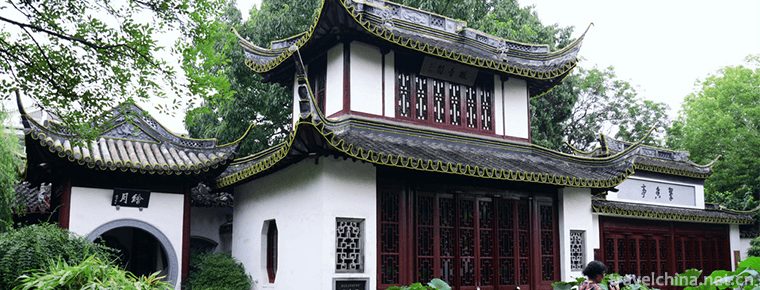
-
Linzhi Basongcuo Scenic Area
Basongtao, also known as Caogao Lake, means "green water" in Tibetan. It is about 18 kilometers long. Its surface area is about 27 square kilometers. .
Views: 157 Time 2018-12-12 -
Shengzhong Lake Scenic Area
Shengzhong Lake Scenic Spot: The largest artificial lake in southwest China, Shengzhong Lake, is located in Shengzhong Lake Scenic Spot of National AAAA Tourist Area in Southern County of Sichuan Prov.
Views: 222 Time 2018-12-26 -
Tianjin Italian Style Area
Tianjin Italian Style Area is located in Hebei District of Tianjin City. It is a quadrangular area surrounded by Wujing Road, Boai Road, Shengli Road and Jianguo Road in Hebei District. There are near.
Views: 148 Time 2019-02-21 -
Eight treasures sweet rice
Babao sweet rice, also known as Babao rice, is a traditional snack with glutinous rice as its main ingredient. With jujube, lotus seed, Baitai, white fruit, longan meat, green red silk and so on.
Views: 202 Time 2019-03-26 -
Legend of Cao Xueqin
The legend of Cao Xueqin refers to the story that the common people in the place where Cao Xueqin lived in his later years respected him and processed his deeds into a story..
Views: 112 Time 2019-04-15 -
Eastern Mongolian Folk Stories in Kazuo
The Folktales of Kazuo East Mongolia are spread in an oral literature in the left-wing Mongolian Autonomous County of Karaqin. Folk narrators, in the traditional way of oral narration and singing,.
Views: 110 Time 2019-05-08 -
Xihe Opera
Xihe Opera, also known as Xingzi Xihe Opera, is a traditional opera popular in Xingzi, De'an and Jiujiang counties and cities of Jiangxi Province. Its main vocal cavity is Pihuang, also known as ".
Views: 124 Time 2019-07-01 -
Tsinghua University
The campus of Tsinghua University is situated in northwest Beijing on the site of the former imperial gardens of the Qing Dynasty, and surrounded by a number of historical sites..
Views: 185 Time 2019-08-31 -
North China Electric Power University
North China Electric Power University is a national key university directly under the Ministry of Education. It is a key construction University of "211 Project" and "985 Project Advant.
Views: 245 Time 2019-09-22 -
Huainan Normal University
The school was founded in 1958 when it was a teacher's College in Huainan. In 2000, approved by the Ministry of education, the former Huainan normal school, Huainan Education Institute and Huainan nor.
Views: 225 Time 2019-11-16 -
Mianyang scenic spots
Mianyang City is a famous historical and cultural city in Sichuan Province, the main node of the dajiuzhai international tourism circle and the Three Kingdoms Shu Road culture international tourism line. It has a 5A level scenic area of "Beichuan Qiang city tourism area".
Views: 69 Time 2020-12-14
